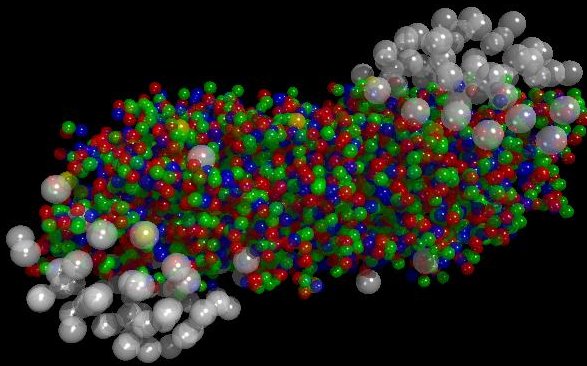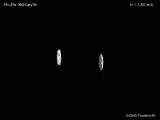Quark Gluon Plasma
![]()
What is the Quark Gluon Plasma?

Pressure and heat melts protons and neutrons into a new state of matter - the
quark gluon plasma.
(Graphics from
RHIC Physics)
Quarks are the constituents of nucleons (protons and neutrons). Usually they are confined in groups of three to form a nucleon. Under certain conditions there should exist a new phase where the nucleons get close to each other such that the quarks can fly around freely in a so-called quark-gluon plasma.
We need a lot of pressure and heat to produce the quark gluon plasma (QGP). This sounds easy in principle. In practise the phase transition takes place at temperatures about 100,000 times the temperature of the core of the sun or (since nobody can imagine the temperature of the sun) about 10,000,000,000 times the temperature of hot tomato soup [1].
Obviously we need big particle colliders like the SPS, RHIC or the LHC to produce these temperatures. Two atoms of lead are smashed at each other at tremendous energies. The result can be seen in this graphic simulation.

Lead-lead collision shortly after smash. The white balls are protons or neutrons.
The small colored balls are the free quarks. (Picture taken from
CERN Press Release)
Here is an animation of the process:
|
|
This animation shows two nucleons colliding. It can be found at the official CERN announcement of the quark gluon plasma. The quark-gluon plasma on Earth was first produced in 2000 at CERN. |
Links
- Quark Gluon Plasma explained from CERN
- RHIC Physics explained
- CERN announcement of the quark gluon plasma.
- More animations of the quark gluon plasma from CERN.
© 2002, Andreas Ipp
